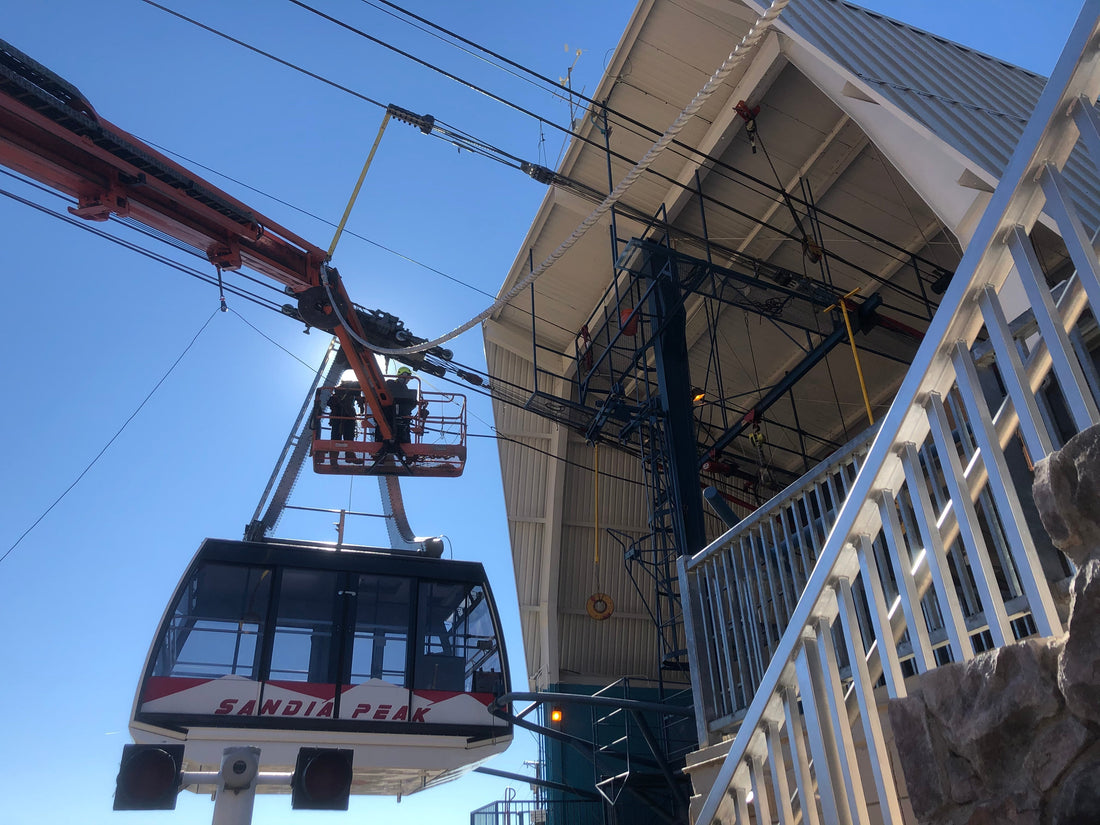Wire ropes for aerial trams are highly specialized, and their manufacturing process is a blend of precision metallurgy, careful engineering, and rigorous quality control. Here’s how they’re typically made:
1. Steel wire production
- It starts with high-carbon steel rods for strength and fatigue resistance.
- The rods are cleaned, coated with a lubricant, and drawn through progressively smaller dies to reduce their diameter while increasing tensile strength.
- The result is very strong, flexible steel wires.
2. Stranding
- Individual wires are twisted together into strands in a stranding machine.
The twist pattern (lay) is chosen to balance strength, flexibility, and wear resistance. - The most common for aerial trams is a Lang lay or regular lay depending on the application.
3. Closing into a rope
- Multiple strands are then laid around a core. Cores are often made of either a steel wire strand core (SWSC) or in most cases today it is a solid plastic core.
- For aerial trams, full steel cores are used for strength and to resist crushing under high tension.
- This stage determines the final rope design, often locked-coil or parallel-closed types for track ropes, and more flexible constructions for haul ropes.
4. Compacting (for locked-coil ropes)
- In a locked-coil rope, the outer wires are shaped and compressed so they interlock, creating a smooth surface that reduces wear on sheaves and improves corrosion
- This also maximizes the metal cross-section, giving the rope more strength for its diameter.
5. Lubrication & protection
- Rope is lubricated internally during manufacturing to reduce friction and protect against corrosion.
- Some aerial tram ropes are galvanized for extra corrosion resistance, especially for wet or snowy environments.
6. Testing & inspection
- Samples are tested for tensile strength, elongation, diameter tolerance, lay length, and sometimes magnetic flux leakage.
- For aerial trams, ropes must meet strict national and international standards.
7. Coiling for transport
- The rope is carefully spooled onto large transport reels or coils—sometimes weighing dozens of tons—ready to be delivered and installed on-site.
Key types of wire ropes for aerial trams:
- Track rope: Thick, locked-coil steel rope that supports the cabins.
- Haul rope: More flexible stranded rope that moves the cabins along the track rope.


